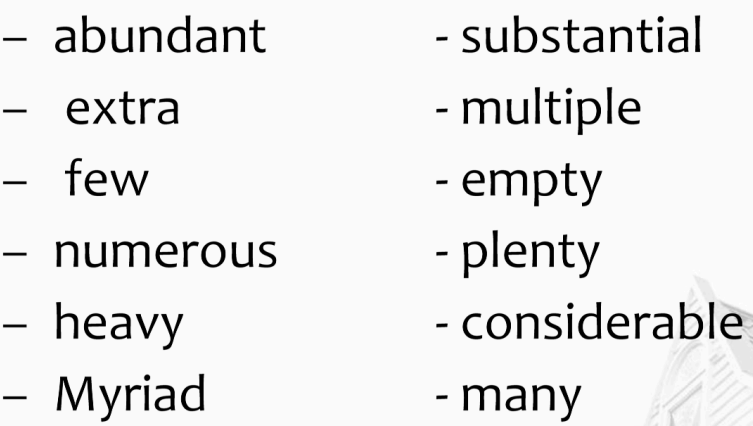[AGE5 00] MIDTERM: Unit 3 Lesson 1 Informative Communication versus other Forms of Communication
1/31
There's no tags or description
Looks like no tags are added yet.
Name | Mastery | Learn | Test | Matching | Spaced |
|---|
No study sessions yet.
32 Terms
Discourse
It is defined as an extended expression in speech or writing.
Exposition
It aims to explain and clarify things or topic, to analyze a situation, to define a term or to give directions
It means that the primary purpose of ___ is to give information about (or an explanation of) an issue, subject, method, or idea.
It can be done through illustration, classification process, process analysis, comparison and contrast, definition and cause-effect analysis.
___ as a discourse gives information, develops an idea, or provides an explanation as one of many techniques.
Its primary function is not to create vivid pictures, although description may at times be a valuable technique of ___.
The primary purpose of ___ is not to convince, although logical arguments and persuasion of frequently use ___ as one their techniques.
Simply told, the primary purpose of ___ merely is to explain and inform.
Illustration Paragraph
Which is also called exemplification paragraph.
It uses examples to make an idea or generalization more specific and detailed.
Classification
It is the process of categorizing or arranging objects, ideas, or information into distinct groups based on shared characteristics or criteria.
Compare and Contrast
This shows either the similarities or the differences between two things; it answers the questions
Cause and Effect
This essays are a type of essay that explores how an event or situation came into being (the cause) and what happens or transpires because of that event or situation (the effect).
The purpose of these types of essays is to explore the "why" or "how" of a situation.
Tips on how to write an exposition
Draft and decide for a topic sentence.
Develop the body of the paragraph.
Write a concluding sentence.
Draft and decide for a topic sentence
The topic sentence should clearly tell your reader what you would like to explain.
It is the central thought of your paragraph and it determines the details and succeeding sentences.
Develop the body of the paragraph
Be sure that all details contribute to the explanation of the topic sentence; transitional devices may be used in developing the paragraph.
Write a concluding sentence
The concluding sentence maybe a restatement of the main idea, a summary of the paragraph and an evaluation of supporting details or explanation.
There are two major forms of exposition:
Definition
Presentation of Procedure
Definition
It is the statement of meaning or significance of the word or term being define.
Presentation of Procedure
It is the step-by-step statement or explanation of how things are done.
Informal Definition
It consists of one or more synonymous expression substituted for the unfamiliar term used; it follows a pattern:
Term/species = genus or classification + differentiate
Term or species is the word being defined; genus or classification the is group or class where the term belongs and diffentia states the distinctive characteristics of the term that makes it different form the rest of the class.
Amplified definition or extended definition
Further explanation
Concrete examples
Comparison and contrast
Word derivation
Negative statement
Physical description
Analysis
Basis principle
Cause and effect
Location
Narration
It is the presentation of the sequence of events portrayed by characters who struggle on a particular conflict in the story.
It is a kind of discourse concerned with action, with events in time, with life in motion.
It answers the question "what happened”.
It is a sequence of events historically or false, fictional or non-fictional presented that the imagination grasps the action.
The intention is to present an event to the reader-what happened and how it happened.
The event itself may be grand or trivia; but whatever is, it the intention is to give the impression of movement time, in to give the sense of witnessing an
Element of Narration
Character
Setting
Plot
Conflict
Character
Element of Narration
It is a person, o sometime even an animal, who takes part in the action of a short story or other literary work.
Setting
Element of Narration
___ of a short story is the time and place in which it happens; authors often use descriptions of landscape, scenery, building, seasons or weather to provide a strong sense of setting.
Plot
Element of Narration
It is a series of events and character actions that relate to the central conflict.
Conflict
Element of Narration
It is a struggle between two people or things in a short story; the main character is usually on one side of the central conflict; on the other side, the main may struggle against another important character, against the forces of nature, against society, or even against something inside himself or herself (felling, emotions, illness).
Transitions
In narration, it is necessary to use ___ to show chronological order since narrative paragraphs involve sequence of events.
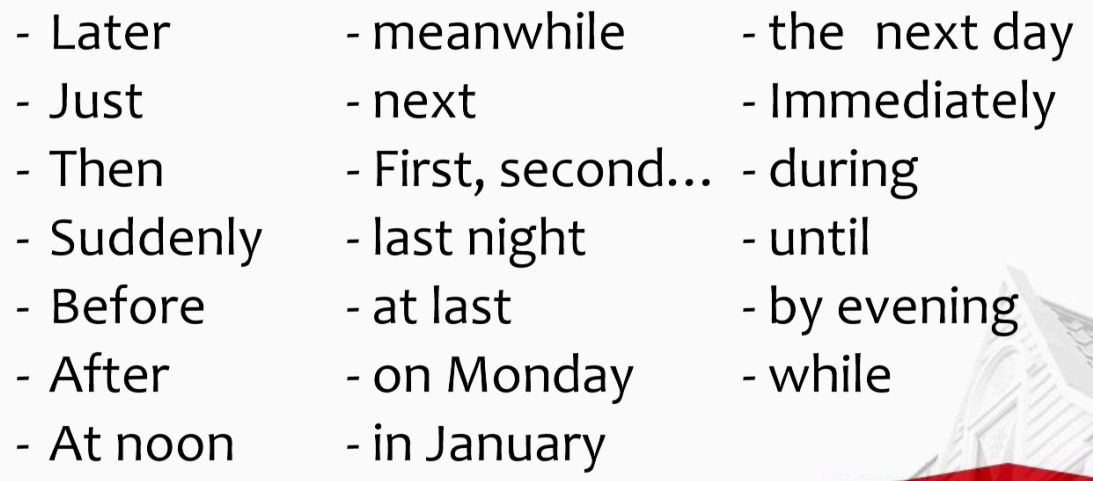
Description
This form of discourse intends to make the reader vividly aware as possible of what the writer has perceived through his senses or his imagination.
It aims to give the reader the "feel" of things described and the quality of a direct experience.
The thing described may be anything that we can grasp using the senses.
A person's face, a sound of a voice, the smell or odor of an attic, etc.
Words that are used to show or give description are adjectives.
These adjectives maybe used to describe a personality or character, color, or shape, feelings, quality, etc.
Adjectives describing personality
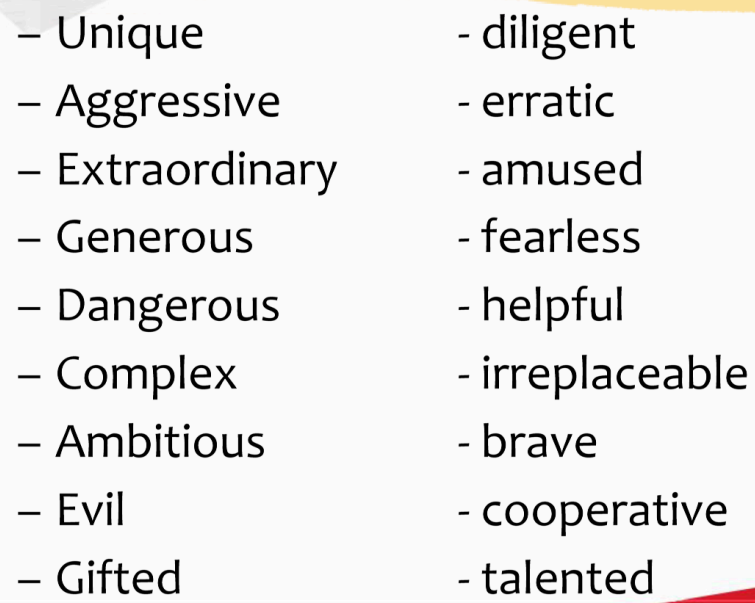
Adjective describing feelings
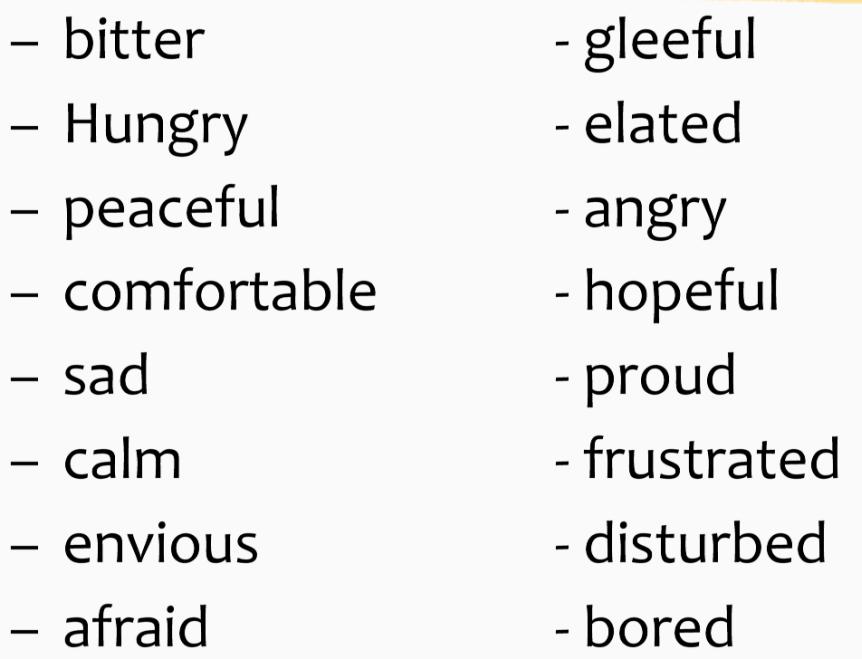
Adjective describing size

Adjective describing shape

Adjectives describing time

Adjective describing sound

Adjective describing taste
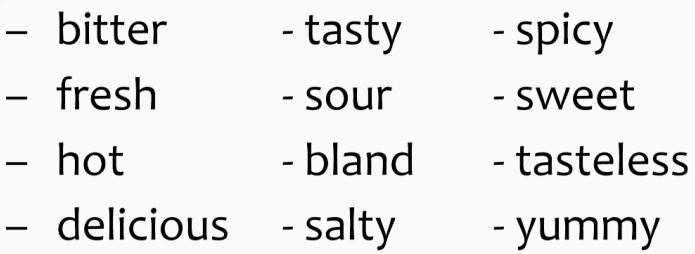
Adjective describing touch
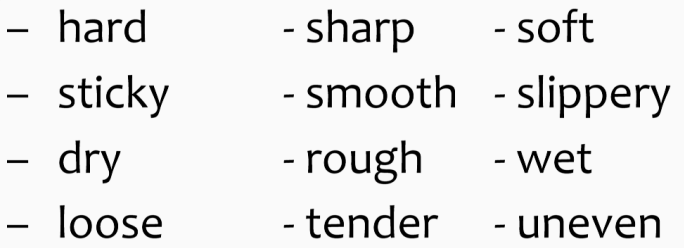
Adjective describing color

Adjective describing quantity
